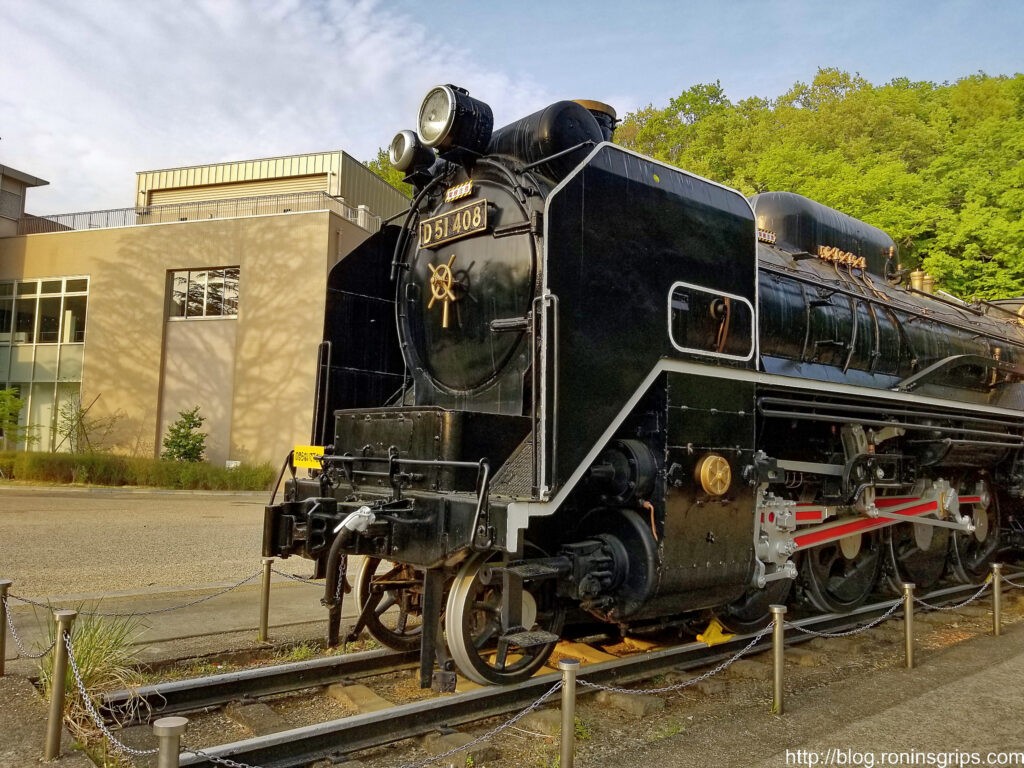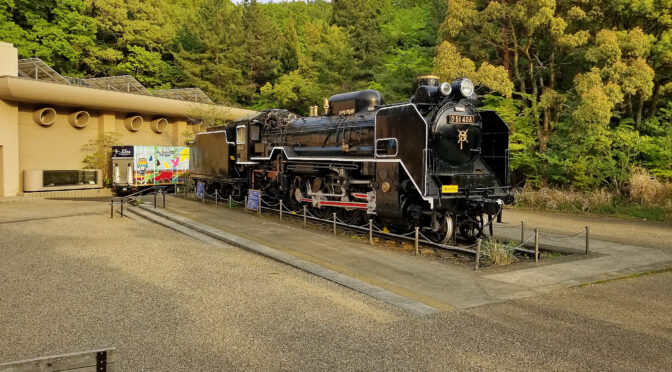I grew up with my dad taking me to see steam engines, steam trains and all kinds of machinery. I’m sure that’s why I find these things so fascinating today. My day job has a fair amount of travel and sometimes I get to see some really cool stuff. I was visiting Tokyo with my wife in April 2019 and we met up with a friend from her childhood, Spike, who showed us around.
One of the places Spike took us was the Ikuta Ryokuchi Park in Kawasaki — I think it was about an hour and a half from downtown Tokyo by train. Ryokuchi is a big park with different sections. We had a great time walking through a exhibits of traditional farms (Minka-en). Outside of the planetarium sat a very nicely preserved D51 Japanese steam locomotive.
There are a ton of pages that can tell you about the D51 “Mikado”-class locomotives – they where built for the Japanese Government Railroad (JGR from 1920-1949) and later the Japanese National Railways (JNR from 1949-1987) by Kawasaki Heavy Industries Rolling Stock, Kisha Seizo, Hitachi, Nippon Sharyo, Mitsubishi and Mitsubishi Heavy Industries. Construction happened in two periods 1936-1945 and also 1950-1951.
In total, 1,115 D51s were built. They had a 2-8-2 wheel layout, were just over 64 feel long, and the locomotive weighed approximately 84.7 US/short tons. Maximum speed was about 55 mph.
The trains were retired in Japan in 1975 though they were used in the Soviet Union until 1979 and 1983 in Taiwan. [click here for more information on Wikipedia plus this is a very interesting page in Japan]
The following is a photo gallery from the visit that you can open and scroll through:


















The park is very much worth visiting and it was very cool to see this D51 up close.
If you find this post useful, please share the link on Facebook, with your friends, etc. Your support is much appreciated and if you have any feedback, please email me at in**@*********ps.com. Please note that for links to other websites, we are only paid if there is an affiliate program such as Avantlink, Impact, Amazon and eBay and only if you purchase something. If you’d like to directly contribute towards our continued reporting, please visit our funding page.
If you are interested about Japanese transportation, check out Alisa Freedman’s book “Tokyo in Transit: Japanese Culture on the Rails and Roads”
